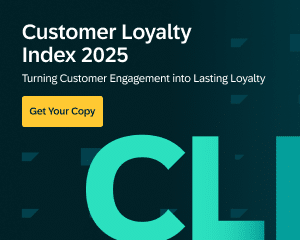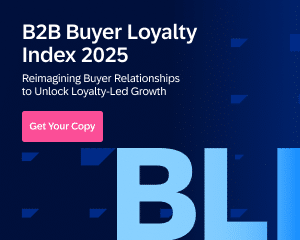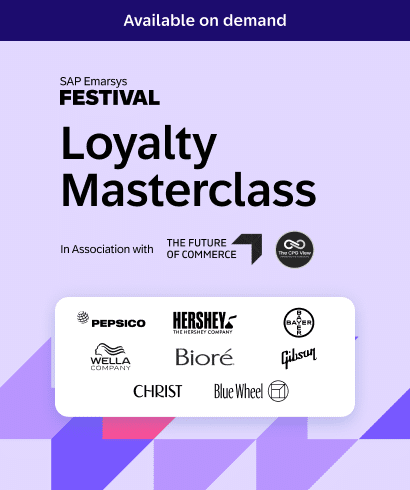Embracing direct-to-consumer (DTC) marketing has become second nature for brands seeking to strengthen customer relationships.
At first glance, the DTC model seems like a win-win: you get to control your brand narrative, gain direct access to customer insights, and harness first-party data to drive growth.
But while the potential is clear, the execution is far more challenging than most marketing teams anticipate. Economic uncertainty, consumer expectations, and market shifts create a landscape where only the most adaptable brands thrive.
Bulk—formerly Bulk Powders— is one such brand.
The UK-based leader in nutritional supplements successfully transitioned from an ingredient-focused supplier to a full-fledged lifestyle brand. Their journey offers valuable lessons for any DTC business looking to connect more directly with its audience.
4 Challenges in Direct-to-Consumer Marketing
While the DTC model offers major upsides, it also comes with significant challenges. For many marketing leaders, the pressure points show up here:
- Economic factors: Global disruptions can derail delivery timelines and product availability. With no retail partners to absorb the impact, DTC brands must answer directly to frustrated customers.
- Customer expectations: Today’s consumers expect hyper-personalized experiences. Meeting these expectations requires sophisticated data strategies that many brands aren’t yet equipped to manage.
- Brand visibility: Without shelf space, DTC brands must work harder to stand out in crowded digital markets—where attention is limited and competition is fierce.
- Operational complexity: Handling fulfillment, returns, and customer service in-house demands infrastructure and expertise that traditional brands may not have developed.
But where other DTC brands faltered, Bulk found success. Their approach to overcoming these challenges provides a blueprint for brands hoping to rise above the competition.
From "Powders" to People: How Bulk Built a Lifestyle Brand
One of Bulk’s most pivotal moves was dropping “Powders” from its name.
This was more than a simple rebrand—it marked a meaningful shift in identity. Bulk repositioned itself from a supplement supplier to a wellness partner, emphasizing human connection and healthy lifestyles.
"We wanted to really focus on becoming a partner with our customers and supporting their changes in lifestyle"
Bulk’s updated identity better aligned with its premium products and positioned the brand to reach people interested in overall wellness—not just fitness. They backed up this shift with meaningful action, including launching recyclable and compostable packaging that reflected their customers’ values.
By centering their customers, Bulk built deep loyalty and gained a sustainable edge in the market.
Personalizing Experiences with First-Party Data
Bulk took full control of their customer relationships by prioritizing first-party data.
Instead of relying on third-party platforms like Amazon, Bulk’s DTC strategy prioritized fostering direct relationships with buyers and collecting first-party insights into their preferences and behaviors.
"We are predominantly selling direct to consumers. Our emphasis is really on our direct consumer because we know that's where we can provide a much better experience."
With this approach, the brand was able to identify at-risk customers with targeted retention efforts, using their purchase history to make product recommendations. By treating people like individuals—not data points—Bulk created a customer experience that stood out.
As Jonsmyth-Clarke puts it, “We are dealing with normal human people. We like to have a conversation rather than just be spoken to.”
Unifying a Multi-Channel Communication Strategy
Many brands adopt multi-channel strategies. However, Bulk implemented theirs with a remarkable level of consideration and consistency. They aligned messaging across every touchpoint—email, social, and web—to build trust and keep customers in the loop.
"We had to really upscale our communication with our customer. We found that communication was really key—how we could deliver that communication across multiple channels was really important."
Championing this harmonious approach was especially valuable during shipping delays or other disruptions, as Bulk’s customers proved to be much more forgiving.
For CMOs looking to replicate Bulk’s strategy, implementing a customer engagement platform that unifies multi-channel communications helps elevate both brand consistency and consumer trust.
Acquiring Customers with Seasonal Campaigns
Bulk used holidays and seasonal events like Black Friday not just to drive sales, but to attract new customers.
Using insights from existing customers, their marketing team built campaigns to target similar prospects, personalizing messaging to show off the brand’s unique value proposition.
This smart targeting helped Bulk balance acquisition with retention—fueling sustainable growth with every seasonal campaign.
"Seasonal events are really important to us. Black Friday is an important event for Bulk as it is for many retailers. We can utilize personalization [to provide] positive interaction with the brand."
Championing Sustainability to Stand Out
In an industry often criticized for waste, Bulk made sustainability a competitive advantage.
"Producing packaging that was recyclable or compostable across the range of our products was really important for us. We received great feedback from our customers."
This move aligned with Bulk’s repositioning as a holistic wellness brand by creating packaging that eco-conscious buyers felt comfortable bringing into their homes and fitness spaces.
CMOs hoping to stand out in similar markets should take note. Making core business practices sustainable inspires brand loyalty and appeal in like-minded consumers.
Balancing Automation with Human-Led Marketing
Bulk struck a powerful balance between tech and empathy. Their team didn’t just automate for efficiency—they used data to better understand customers and improve their experience.
Mark Sherwood, E-commerce Director at Bulk, shared how their team combined traditional marketing principles with advanced CRM insights to:
- Simplify the customer journey: By mapping out the buying journey using the behavioral patterns of real buyers, the team removed friction points and created intuitive pathways to purchasing.
- Combine data points: Bulk connected customer goals with on-site behavior and traditional RFM (Recency, Frequency, Monetary value) data, building a clearer picture of each buyer.
- Personalize multi-channel experiences: Rather than choosing between automation or human touch, they used both to deliver individualized experiences at scale.
Hear more from Bulk’s Mark Sherwood about how this human-led approach was a winning one for their DTC brand.
10 Strategies to Try for Direct-to-Consumer Success
Looking to upgrade your direct-to-consumer approach? Start with these takeaways from Bulk’s playbook:
- Build direct customer connections: There’s real value in owning the relationship with your customers instead of relying on third-party marketplaces. You’ll have more control over the customer experience and unlock access to first-party data.
- Make personalization actually personal: Use behavioral insights to tailor content across email, ads, and on-site experiences.
- Communicate consistently across channels: Customers notice when your message stays clear across email, social media, and your website. This consistency pays off when trust is on the line during unforeseen events like shipping delays or supply issues.
- Consider a strategic rebrand: Rebranding works best when it reflects genuine changes in business direction or consumer needs. Bulk dropped “Powders” to signal a lifestyle-first approach.
- Live your values: Customers need to see your values in action to believe in them. When Bulk invested in eco-friendly packaging, they aligned their business practices with a cause their customers cared about—sustainability.
- Get creative with seasonal opportunities: Holidays aren’t just sales spikes—they’re moments to meet new customers and reinforce loyalty.
- Create dialogue, not monologues: DTC brands stand out when they treat marketing like a two-way conversation. Ask for feedback, respond to questions, and show customers that you’re listening.
- Technology should make us more connected: Let automation handle the heavy lifting, but don’t replace all your human-led touchpoints with AI. Buyers know the difference between efficiency and detachment.
- Remove friction at every turn: You can’t afford a buggy form field, frustrating return process, or even an extra mouse click. Audit your buyer journey often. Make every step seamless.
- Combine your data points: Don’t collect data for the sake of it. Unifying your customer insights—purchase history, browsing patterns, buyer goals—creates a complete picture that gives you the tools to deliver smarter, more responsive campaigns.
In a world where algorithms steer the ship, Bulk’s story proves something simple yet powerful: real connections still drive real results.
"It all comes back to how you have that conversation. How can you get those people to engage across multiple channels where the customer is happy? And utilizing personalization [to treat them] as individuals—I think that's where brands really win."







